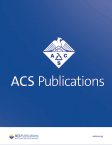Abstract PO4-12-08: Changes in peripheral immune cell composition in women who do and do not develop breast cancer
IF 3.4
Q2 PUBLIC, ENVIRONMENTAL & OCCUPATIONAL HEALTH
引用次数: 0
Abstract
Background: Breast cancer survivors have higher age-specific rates of hypertension and other chronic diseases than women without a history of breast cancer. We and others have shown that alterations to the immune system are associated with risk of these conditions in the general population, leading to the hypothesis that the increased chronic disease risk in breast cancer survivors may be driven, in part, by lasting changes in immunity. Peripheral immune cell composition appears to become altered years before a breast cancer diagnosis, but little is currently known about the influence of different breast cancer treatments on subsequent changes to leukocyte composition and the persistence of these associations over time. Methods: Among 410 women enrolled in the Sister Study, paired blood samples collected an average of 7.6 years apart were analyzed for DNA methylation (DNAm). Deconvolution methods were applied to these DNAm data to estimate circulating percentages of 12 leukocyte subsets. Approximately half the women sampled were diagnosed and treated for breast cancer between the blood draws (n= 185) whereas the other half remained breast cancer-free (n= 225). Breast tumor characteristics and treatment information were abstracted from medical records. Mixed-effect linear regression models were used to estimate changes in leukocyte composition over time comparing women with breast cancer to those who remained breast cancer-free. A case-only analysis of breast cancer survivors was performed to examine the persistence of changes over time and to explore whether changes in leukocyte composition were associated with the types of therapies received (endocrine therapy, radiation therapy, chemotherapy). All models were adjusted for age and self-reported race. In the treatment analysis, because tumor characteristics can guide clinical decisions, tumor estrogen receptor status and stage at diagnosis were additionally included as model covariates. Results: At baseline, women who developed breast cancer between the blood draws had lower mean circulating percentages of CD8+ cytotoxic T cells than women who remained breast cancer-free (3.8% vs 4.6%; P-diff= 0.04). After accounting for differences in leukocyte composition at baseline, compared to women who remained breast cancer-free, women diagnosed and treated for breast cancer between the blood draws had decreases in total circulating CD4+ helper T cell percentage (adjusted mean difference [β]= -1.50, 95% CI: -2.56, -0.44, P= 0.006) and alterations to both naïve and memory B cell percentages (naïve B cells, β= 0.46, 95% CI: 0.17, 0.75, P= 0.002; memory B cells, β= -0.22, 95% CI: -0.34, -0.09, P= 0.001). Although associations did not vary by tumor characteristics or participant race, the changes in leukocyte composition appeared to persist over time as changes were not associated with time since diagnosis. In the case-only analysis of different breast cancer therapies, radiation was associated with decreases in CD4+ T cells (β= -2.56, 95% CI: -4.26, -0.88, P= 0.003) and chemotherapy was associated with increases in B cells (β= 0.62, 95% CI: 0.07, 1.16, P= 0.03). Surgery and endocrine therapy were not meaningfully associated with changes in leukocyte composition. Conclusions: Breast cancer survivors have lasting changes in peripheral leukocyte composition that may be related to the types of treatments received. These findings add to our understanding of the biological changes that underlie the long-term health of breast cancer survivors. Citation Format: Jacob Kresovich, Katie O'Brien, Zongli Xu, Clarice Weinberg, Dale Sandler, Jack Taylor. Changes in peripheral immune cell composition in women who do and do not develop breast cancer [abstract]. In: Proceedings of the 2023 San Antonio Breast Cancer Symposium; 2023 Dec 5-9; San Antonio, TX. Philadelphia (PA): AACR; Cancer Res 2024;84(9 Suppl):Abstract nr PO4-12-08.摘要 PO4-12-08:罹患和未罹患乳腺癌妇女外周免疫细胞组成的变化
背景:与没有乳腺癌病史的妇女相比,乳腺癌幸存者患高血压和其他慢性疾病的特定年龄比率较高。我们和其他人已经证明,免疫系统的改变与普通人群患这些疾病的风险有关,从而提出了乳腺癌幸存者患慢性疾病风险增加的部分原因可能是免疫系统的持久变化的假设。外周免疫细胞的组成似乎在乳腺癌确诊前几年就发生了改变,但目前人们对不同乳腺癌治疗方法对随后白细胞组成变化的影响以及这些关联随着时间推移的持续性知之甚少。研究方法在参加姐妹研究(Sister Study)的 410 名女性中,对平均相隔 7.6 年采集的配对血液样本进行了 DNA 甲基化(DNAm)分析。对这些 DNAm 数据采用解卷积方法来估算 12 个白细胞亚群的循环百分比。在两次抽血之间,约有一半的女性被诊断出患有乳腺癌并接受了治疗(人数= 185),而另一半女性则没有患乳腺癌(人数= 225)。乳腺肿瘤特征和治疗信息均来自医疗记录。采用混合效应线性回归模型来估计白细胞组成随时间的变化,并将患乳腺癌的妇女与未患乳腺癌的妇女进行比较。对乳腺癌幸存者进行了纯病例分析,以检查随时间变化的持续性,并探讨白细胞组成的变化是否与接受的治疗类型(内分泌治疗、放疗、化疗)有关。所有模型均根据年龄和自我报告的种族进行了调整。在治疗分析中,由于肿瘤特征可指导临床决策,因此还将肿瘤雌激素受体状态和诊断时的分期作为模型协变量。结果基线时,在两次抽血之间罹患乳腺癌的妇女的 CD8+ 细胞毒性 T 细胞平均循环百分比低于未患乳腺癌的妇女(3.8% vs 4.6%;P-diff= 0.04)。考虑到基线时白细胞组成的差异后,与未患乳腺癌的妇女相比,在两次抽血之间诊断并治疗乳腺癌的妇女循环中 CD4+ 辅助性 T 细胞的总百分比有所下降(调整后的平均差 [β]= -1.50,95% CI:-2.56,-0.44,P= 0.006)以及幼稚和记忆 B 细胞百分比的变化(幼稚 B 细胞,β= 0.46,95% CI:0.17,0.75,P= 0.002;记忆 B 细胞,β= -0.22,95% CI:-0.34,-0.09,P= 0.001)。虽然相关性不因肿瘤特征或参与者种族而异,但白细胞组成的变化似乎会随着时间的推移而持续,因为变化与诊断后的时间无关。在对不同乳腺癌疗法进行的纯病例分析中,放疗与 CD4+ T 细胞的减少有关(β= -2.56,95% CI:-4.26,-0.88,P= 0.003),化疗与 B 细胞的增加有关(β= 0.62,95% CI:0.07,1.16,P= 0.03)。手术和内分泌治疗与白细胞组成的变化无明显关联。结论乳腺癌幸存者的外周白细胞成分会发生持久性变化,这可能与接受的治疗类型有关。这些发现有助于我们了解乳腺癌幸存者长期健康的生物学变化。引用格式:雅各布-克雷索维奇、凯蒂-奥布莱恩、徐宗礼、克拉丽斯-温伯格、戴尔-桑德勒、杰克-泰勒。患乳腺癌和未患乳腺癌妇女外周免疫细胞组成的变化[摘要]。见:2023 年圣安东尼奥乳腺癌研讨会论文集;2023 年 12 月 5-9 日;德克萨斯州圣安东尼奥。费城(宾夕法尼亚州):AACR; Cancer Res 2024;84(9 Suppl):Abstract nr PO4-12-08.
本文章由计算机程序翻译,如有差异,请以英文原文为准。
求助全文
约1分钟内获得全文
求助全文
来源期刊

ACS Chemical Health & Safety
PUBLIC, ENVIRONMENTAL & OCCUPATIONAL HEALTH-
CiteScore
3.10
自引率
20.00%
发文量
63
期刊介绍:
The Journal of Chemical Health and Safety focuses on news, information, and ideas relating to issues and advances in chemical health and safety. The Journal of Chemical Health and Safety covers up-to-the minute, in-depth views of safety issues ranging from OSHA and EPA regulations to the safe handling of hazardous waste, from the latest innovations in effective chemical hygiene practices to the courts'' most recent rulings on safety-related lawsuits. The Journal of Chemical Health and Safety presents real-world information that health, safety and environmental professionals and others responsible for the safety of their workplaces can put to use right away, identifying potential and developing safety concerns before they do real harm.
 求助内容:
求助内容: 应助结果提醒方式:
应助结果提醒方式:


